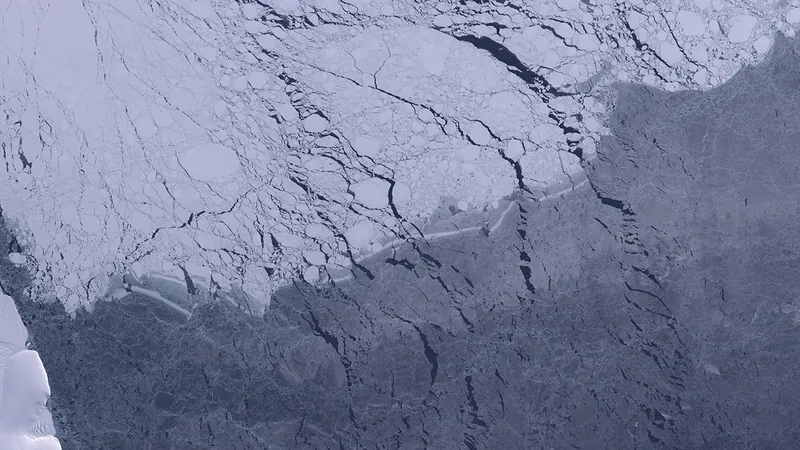
Warm Seawater Threatens Stability of Major Antarctic Ice Shelf – Is Time Running Out?
2025-01-08
Author: Yu
Introduction
The magnificent Antarctic Ice Sheet contains over half of the world’s freshwater, making it a critical component of our planet's climate system. Throughout the continent, massive ice extends over the ocean, resulting in substantial floating ice shelves. Recent observations reveal that these ice shelves are increasingly vulnerable, thinning due to rising ocean temperatures and intensifying the implications for global sea levels and climate dynamics.
Filchner-Ronne Ice Shelf Stability
One of the largest among them, the Filchner-Ronne Ice Shelf, which stretches over the Weddell Sea, has, until now, demonstrated relative stability. This stability has been attributed to the frigid currents that circulate beneath the shelf. However, scientific models project a concerning shift in ocean currents that could pave the way for warmer waters to reach this vital area in the foreseeable future.
Research Methodology
To better understand the potential future of the Filchner-Ronne Ice Shelf, researchers, led by Steiger et al., examined water temperature and velocity data collected between 2017 and 2021. This data came from sophisticated sensors affixed to the seafloor and sub-surface floats located near the ice shelf.
Previous Observations
Previous research has shown that during the summer months, warm seawater from deeper ocean layers rises up to the continental shelf and flows toward the ice shelf through the Filchner Trough. However, past observations were often limited to isolated sites or individual years.
Comprehensive Study Findings
This comprehensive study indicates that the movement of warm water occurs not only in the Filchner Trough but also in a smaller, eastern trough, with the significance of these pathways fluctuating yearly. Particularly alarming is the finding that during warmer-than-average years, the flow of warm water surges more rapidly across the continental shelf, raising concerns about accelerated ice melt.
Impact of Warmer Summers
Notably, the two summers of 2017 and 2018 were marked by exceptionally warm inflows of seawater and a stark reduction in floating sea ice cover. Researchers speculate that the thinning ice cover significantly alters ocean dynamics, allowing warm water to rise and encroach more easily onto the continental shelf.
Uncertainty and Observations
While it remains uncertain whether these warmer waters actually reached the edge of the Filchner-Ronne Ice Shelf, observations from summer 2013 confirmed warm waters encountered the ice. Past studies suggested a connection between warm water movement and wind patterns, highlighting the complexity of the interactions between ocean currents and ice dynamics.
Global Implications
As scientists continue to monitor these changes, the ramifications for global sea levels become increasingly pressing. The encroaching warmth in the Southern Ocean could play a pivotal role in the future stability of one of the planet's most critical ice formations. If trends continue, the consequences could be dire, underscoring the necessity for increased research and monitoring efforts.
Conclusion
Get ready, because the fate of our planet could hinge on the actions we take today!

 Brasil (PT)
Brasil (PT)
 Canada (EN)
Canada (EN)
 Chile (ES)
Chile (ES)
 Česko (CS)
Česko (CS)
 대한민국 (KO)
대한민국 (KO)
 España (ES)
España (ES)
 France (FR)
France (FR)
 Hong Kong (EN)
Hong Kong (EN)
 Italia (IT)
Italia (IT)
 日本 (JA)
日本 (JA)
 Magyarország (HU)
Magyarország (HU)
 Norge (NO)
Norge (NO)
 Polska (PL)
Polska (PL)
 Schweiz (DE)
Schweiz (DE)
 Singapore (EN)
Singapore (EN)
 Sverige (SV)
Sverige (SV)
 Suomi (FI)
Suomi (FI)
 Türkiye (TR)
Türkiye (TR)
 الإمارات العربية المتحدة (AR)
الإمارات العربية المتحدة (AR)